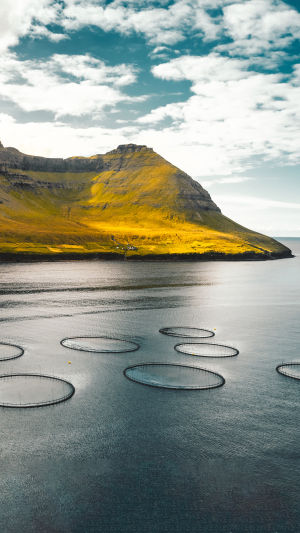The Faroe Islands, a hidden gem nestled between Iceland and Norway, offer a breathtaking escape into a land of dramatic landscapes and rich cultural heritage.
Known for their rugged cliffs, stunning fjords, and vibrant wildlife, these islands promise an unforgettable experience for nature enthusiasts and adventure seekers alike. Here’s a guide to exploring two of the most captivating attractions in the Faroe Islands.
<h3>1. Saksun Village: A Step Back in Time </h3>
<b> Location:</b> Saksun is located on the island of Streymoy, about a 45-minute drive from Tórshavn, the capital of the Faroe Islands.
<h3> What to See:</h3>
• <b> Saksun Parish:</b> This charming 19th-century wooden Parish is a centerpiece of the village. Its classic architecture and serene setting make it a perfect spot for photography and reflection. The Parish is open daily, but services are held on Sundays and during special occasions.
• <b> The Lagoon and Waterfall:</b> Saksun is famous for its picturesque lagoon, which is connected to the sea by a narrow channel. The surrounding cliffs and the dramatic waterfall cascading into the lagoon create a mesmerizing landscape. The lagoon is accessible year-round, though the best times to visit are during the spring and summer when the weather is milder and the surroundings are lush and green.
<b> Admission:</b> Free to visit. Donations are appreciated for the Parish.
<b> Travel Tips:</b> Wear sturdy walking shoes for exploring the village and surrounding trails. Be prepared for sudden weather changes, as conditions can be quite variable.
<h3>2. Mulafossur Waterfall: Nature’s Masterpiece </h3>
<b> Location: </b> Mulafossur Waterfall is located in the village of Gásadalur on Vágar Island. It’s about a 1-hour drive from Tórshavn.
<h3> What to See:</h3>
• <b> The Waterfall:</b> One of the most iconic landmarks of the Faroe Islands, Mulafossur Waterfall plunges 70 meters into the Atlantic Ocean. The waterfall is set against a dramatic backdrop of steep cliffs and lush greenery, creating a picturesque scene that’s perfect for photographs. There’s a viewing platform near the village that provides an excellent vantage point for observing the falls and the surrounding landscape.
<b> Opening Hours:</b> The waterfall is accessible year-round. The best time to visit is during daylight hours, as there are no facilities on-site and the area can be slippery in wet conditions.
<b> Admission:</b> Free. There are no entry fees or guided tours; visitors can explore at their own pace.
<b> Travel Tips:</b> Bring a camera to capture the stunning views. Check the weather forecast before visiting, as strong winds and rain can affect visibility and safety.
<h3> Planning Your Trip </h3>
<b> Best Time to Visit: </b> The Faroe Islands are a year-round destination, but summer offers the best weather for outdoor activities. Winter can be harsh, but it also provides a chance to see the Northern Lights.
<b> Accommodation:</b> Tórshavn, Gásadalur, and other villages offer a range of accommodation options from cozy guesthouses to more luxurious stays. Booking in advance is recommended, especially during peak tourist seasons.
<b> Transportation:</b> Renting a car is highly recommended for exploring the islands at your own pace. Public transport is available but may not cover all tourist sites efficiently.
Lykkers, the Faroe Islands, with their enchanting landscapes and unique charm, offer a captivating journey into one of Europe’s most untouched natural havens. Whether you’re marveling at Saksun’s serene beauty or the majestic Mulafossur Waterfall, these destinations promise a memorable experience.





